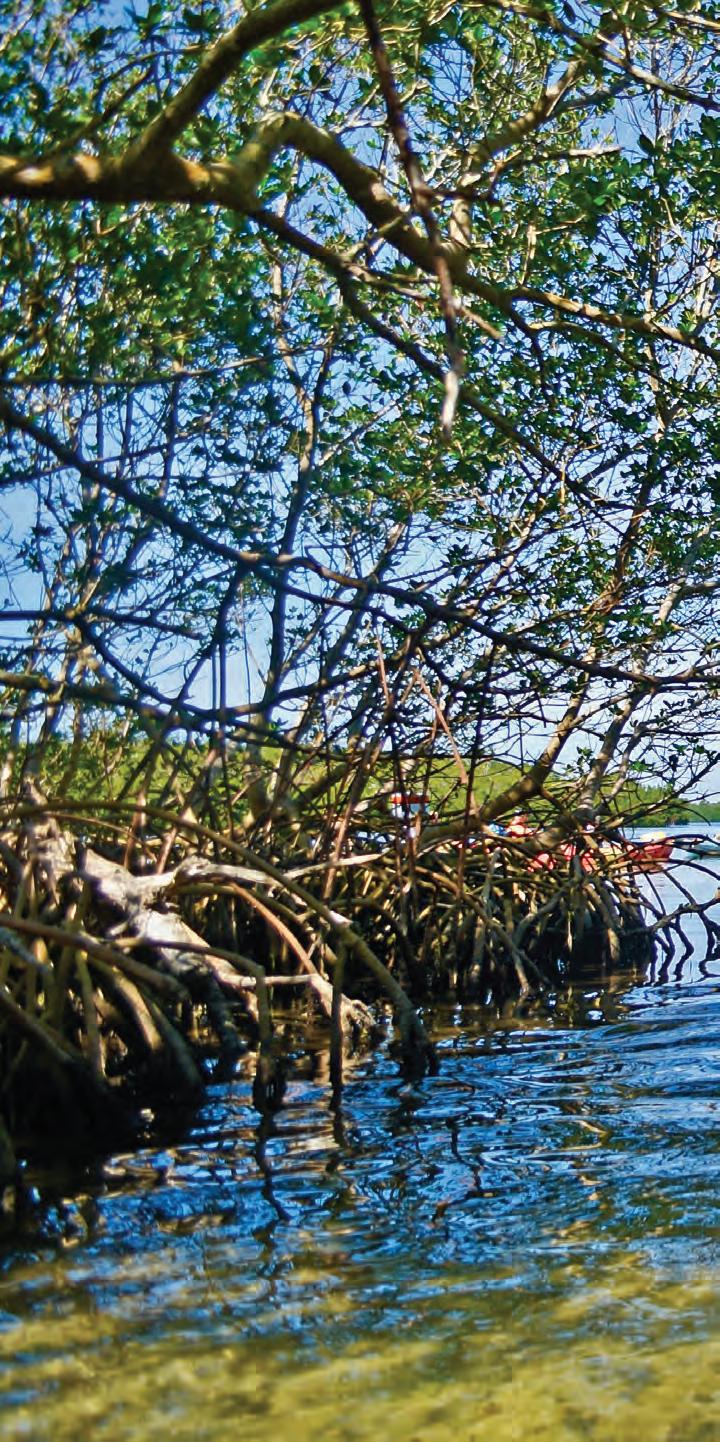
3 minute read
PADDLING THE WILD
Key Life’s intrepid reporter encounters
Florida’s unique ecosystem on a kayak tour through Lido Key’s magical mangrove tunnels.
BY LESLEY DWYER | CONTRIBUTOR
It’s Thursday afternoon, and I’m kayaking through tunnels carved out of mangrove branches off south Lido Key. The canopy of leaves fights off the blazing sun outside, and the rays can only reach my skin in specks. The air feels about 10 degrees cooler, and the office feels about 1,000 miles away.
My assignment is to take a kayak tour from Ted Sperling Park, where Sarasota County oversees the operation of seven kayak concessionaires that offer rentals and tours, through the mangrove tunnels just offshore. The company I’ve selected to lead my tour is Kayaking SRQ.
Even in a group of 15, the excursion is slow-paced and peaceful. The tunnels are narrow, so the kayaks glide along single file. Minnows swim alongside, and every so often, a fiddler crab breaks the silence by shuffling up a branch.
If you get lucky, you’ll see starfish. I only saw two on this tour, but in 2016, my family rented kayaks to ring in the new year. There were so many starfish we couldn’t count them. They were blanketing the mangrove roots like presents under a Christmas tree.
Continued on Page 64
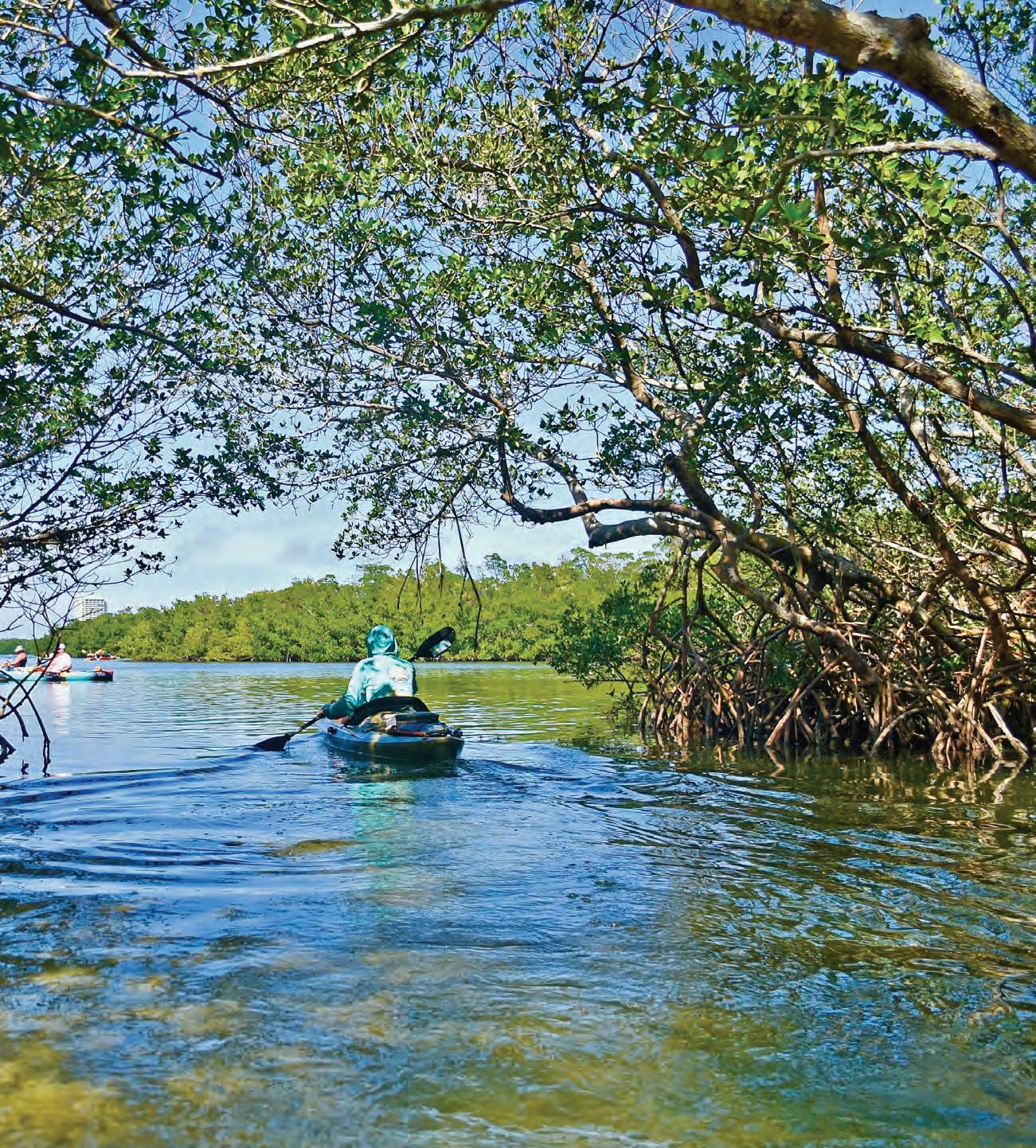
Continued from Page 62
My mother was 66 years old at the time, and my son was only 3. Perhaps a baby who can’t sit up on his own yet shouldn’t be brought along, but outside of that, the tunnels are fit for any age. In a worst-case scenario and the kayak tips, the surrounding water is only about two feet deep.
“If anything weird happens, you guys need to put your feet down,” our tour guide Steffan Simmons says. “Otherwise, I will embarrass you. I’ll do an open water rescue in two feet of water, and it gets pretty dramatic.”
Simmons also lets us know that there’s no cool way to get into a kayak, so we’re instructed to “plop and pivot.” It may not be graceful, but again, anyone can do it. I plop my butt in the seat, swing my legs over the side, and with a little push from Simmons, I’m off.
Our group gathers in an open area after kayaking through the first tunnel, which is routine for each passage. The water is still shallow outside the mangroves, but there’s no shield from the sun, so make sure to pack sunscreen.
But where’s our tour guide? Simmons is suddenly nowhere to be seen.
Just as another kayaker wonders aloud if we’ve been abandoned, Simmons emerges from the tunnel with a paddle in one hand and a snake wrapped around the other.
“Paddling with one arm holding a snake is very difficult. My forearm is on fire right now,” he yells while slowly making his way over to the group.
Kayaking Srq
Kim and Greg Gregory opened Kayaking SRQ in 2017. Within a year, their company earned the number one spot on TripAdvisor and they have kept that title ever since.
“We’re pretty picky about who we hire,” Kim says.
Aside from superstar guide Steffan Simmons, the kayak outfitter has six other tour guides at the park. Fishing, eco, paddle board and private tours are also offered.
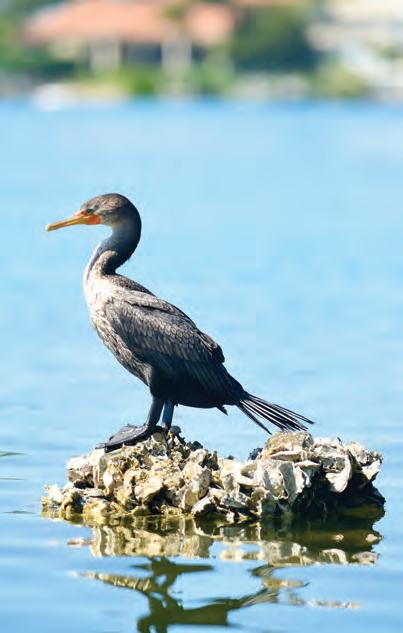
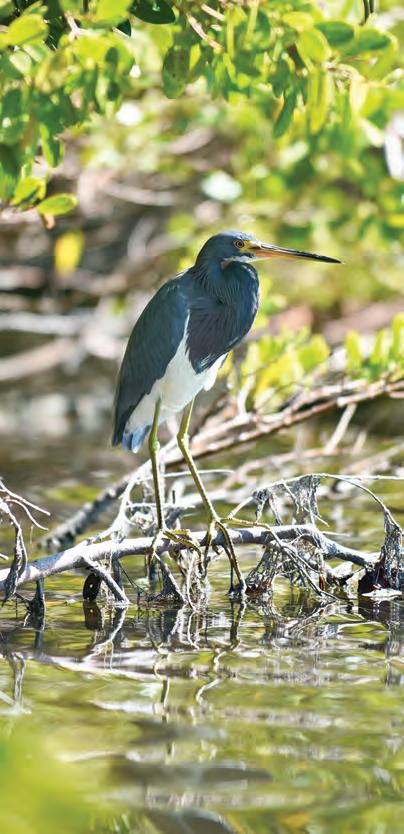
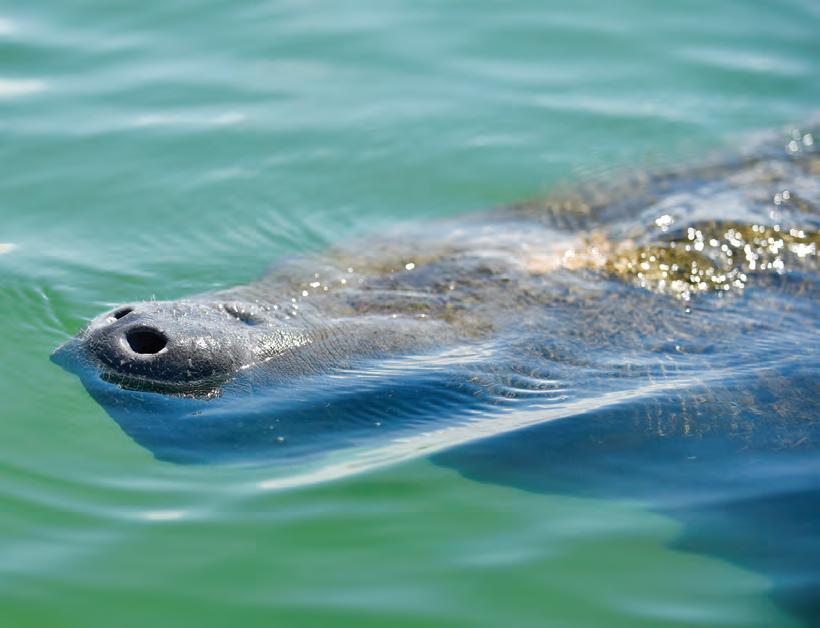
Info: 941-799-1863 or visit KayakingSrq.com.
Simmons jokes that the snake is rubber. But it’s very much alive — a rust-colored mangrove marsh snake. Ted Sperling Park Ranger Pete Garcia said it’s unusual to see snakes in the park because it’s filled with so many predators, especially osprey. Plus, the thick maze of mangrove roots provides a plethora of hiding spots.
Surprising us with a live snake over his head Tarzan-style pretty much sums up the experience with Sim-
Continued on Page 66

Continued from Page 64 mons, who is a self-described “unicorn” because he was born and raised locally. He doesn’t hesitate to scoop up a snake or jellyfish and is incredibly knowledgeable about the surrounding area. He’s the perfect mix of tour guide, historian and science teacher.
Simmons points to the snake’s tail and explains that males have long, narrow tails and females have short, stubby tails. Then, he calls her a beautiful little lady and gently releases her back into the water.
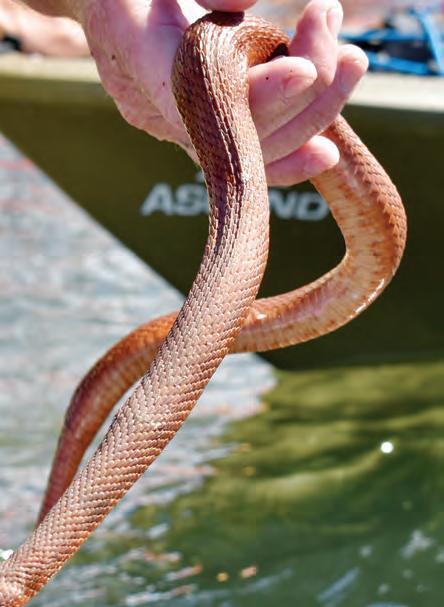
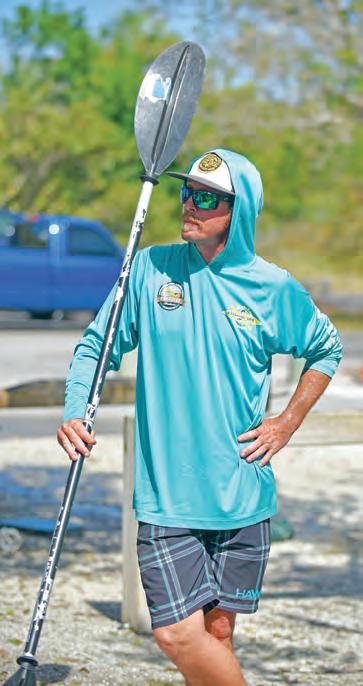
The waiting areas outside of the tunnels are not considered “open water” because they’re still within the protective barrier of the bay and mangroves. We make a brief pit stop on a tiny island and get a panoramic view of the Gulf of Mexico and the history of John Ringling from Simmons, but it’s too windy to venture any further that day.
“When I see whitecaps out in the channel, I don’t do the open water no
Continued on Page 68










